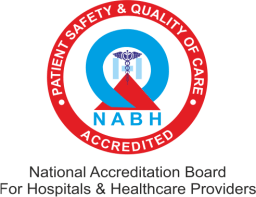The shoulder comprises of two separate joints, i.e., the glenohumeral joint which is the ball-socket joint and the acromioclavicular joint which enables the three-dimensional motion of the joint. However, shoulder arthritis commonly refers to and occurs in the ball-socket joint where the cartilage layers either over the ball or the socket wear down till the deeper layers exposing the bone surfaces to frictional stress.
Diagnosing the Symptoms:
The Shoulder cartilage typically degrades in four stages:
1. Initially, the cartilage loses its rigidity and gets soft,
2. Then it develops cracks over its surface,
3. It further deteriorates and starts flaking like dry paint,
4. Finally, it wears away layer by layer, exposing the bone surface.
Depending on the cartilage conditions, there are a few symptoms that are commonly observed in shoulder arthritis. These symptoms include:
• Persistent pain in and around the shoulder: The pain continues even when the shoulder is at rest. It gets worse when one tries to lift heavy objects.
• Muscle weakness (atrophy): lack of strength in muscles to perform even the most simple tasks.
• Limited range of motion: The joint feels locked at a certain angle or fails to complete circular motion.
• Clicking or grinding noise: while rotating the joint, it clicks making a sound or feels like the bones are scarping against each other.
• Tenderness: the shoulder surface feels tender and squishy when pressed.
Treating Shoulder Arthritis:
Depending on the degradation level of the cartilage, shoulder arthritis can be treated via therapy, medications or surgical procedures:
Physical Therapy and Remedies:
If the cartilage damage is in the initial stage, you can utilize the following remedies to cure the pain and improve shoulder functions:
• Hot and cold packs: like any other joint arthritis, ice packs work great for relieving pain and relaxing the shoulder. Similarly, heat packs help improve flexibility and rotary movement.
• Range-of-motion exercises: performing light motion improvement exercises under the guidance of a physiotherapist can help improve the range of the joints motion.
• Reducing shoulder movements: by making specific lifestyle changes and avoiding shoulder straining tasks, you can help the joint rest and prevent further degradation.
Medications:
• If the cartilage damage is moderate, taking prescribed medications can help improve the situation.
• Although over-the-counter medicines are known to be effective, it is always recommended that discuss the drugs and their dosage with your regular practitioner.
• You can also opt for injective shots such as cortisone shots and hyaluronic acid shots which are quite effective in numbing the pain for longer durations.
Surgical Treatment:
Arthroscopic Shoulder Debridement (Arthroscopy):
An arthroscope is a tiny camera in a thin straw-like structure which is inserted inside the body through a small incision to view the internal elements. It is used with thin tube-like micro-instruments to perform minimally invasive surgeries.
Here, it is used for surgically debriding (removing) the damaged cartilage particles which cause the pain and clean out the joint. This surgery is known to relieve arthritis pain for 12 to 24 months or longer. This treatment cures the pain and not the disease itself hence being a temporary solution for severe arthritis cases.
Shoulder Joint Replacement:
In extreme cases where the cartilage tissues over both the joint parts are severely damaged, joint replacement is the most effective solution. Along with relieving pain, it also improves the range of motion of the shoulder. This surgery can be performed as:
Standard total shoulder replacement surgery:
• Here, the damaged ball-socket parts are replaced with synthetic implants.
• Here, a plastic cup is attached into the shoulder socket, and a metal ball is attached to the top of the upper arm bone. It depends on the rotator cuff muscles to function correctly.
Reverse total shoulder replacement surgery:
• Here, the natural positions of the ball and the socket are reversed.
• Unlike the standard replacement procedure, the metal ball is planted in the socket, and the plastic cup is attached to the top of the upper arm bone.
• This type of shoulder replacement was designed explicitly for cases where there are rotator cuff tears, and the rotator tendons are unable to function.
These surgical procedures have significantly evolved and now have a higher success rate. They are also readily available in any orthopaedic hospital in Pune.
If you’re considering having a shoulder arthroscopy in Pune, Sai Shree Orthopaedic Hospital is the best option for you. Employing a team of the most highly skilled orthopaedic doctors in Pune, Sai Shree has one of the best track records of performing successful replacement surgeries. They also provide the most affordable treatment options for hip, shoulder, spine and knee joint replacement surgery in Pune.
Visit the Sai Shree Hospital website to learn more about their diverse treatments and solutions.


